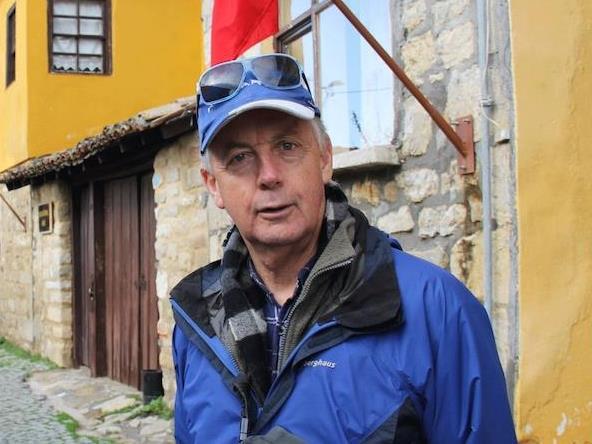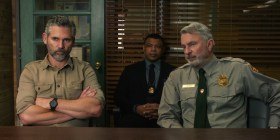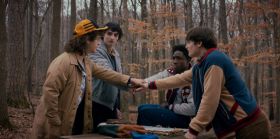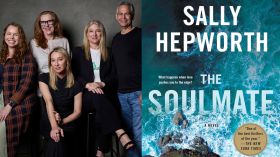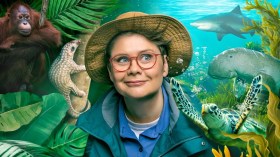Image: John Moore walking the Camino de Santiago in northern Spain.
Independent documentary director and producer John Moore died on the night of Tuesday July 23, 2019, two days after his seventieth birthday. He floated on the edge of death for weeks with a brain tumour which became evident a year ago.
He was a quiet man whose memorial is a string of documentaries about key moments and people in our history. He described himself as ‘the producer of documentaries for Australian and international broadcasters. He specialises in biographical, science and historical docu-dramas as well as feature length documentaries.’
As producer and sometimes director and writer he leaves us stories of Donald Thomson as a solitary anthropologist with the Yolngu people in Thomson of Arnhem Land, Dr Bert Wainer’s battle with the Victorian government in Abortion, Corruption and Cops, and Menzies and Churchill at War, using footage from the touristic Prime Minister’s own movie camera.
He supported Steve Thomas in his lucid rage to tell the story of Black Man’s Houses, about the Tasmanian Aborigines who died in exile confined on Flinders Island, and helped Nicole Ma to cohere Putuparri and the Rainmakers 25 years later.
For director and cinematographer Kevin Anderson he produced the prescient In the Realm of the Hackers, and Trial by Fire which painted a tender picture of a small town CFA crew over a long, threatening summer.
He became fascinated by the creation of our national myths which led to three films about historian Charles Bean, General Sir John Monash and the intelligence work which led to the assault on Gallipoli. He shared his passion with director Wain Fimeri who has a similar feel for telling detail.
According to Wain, ‘I was fortunate to make two films with John. He loved stories of our country, and he pursued them with a fierce energy concealed beneath a legendary calm. He was a rare gentleman, curious and generous. He was also something of a Nanna. A characteristic that is charming in a man. With John, you always felt there was a grown up in the room.’
He had further plans for dramatised history documentaries but his final memorial is From Under the Rubble by Anne Tsoulis, about Palestinian civilians in Gaza.
He grew up in Melbourne, stayed out of the clutches of a university and somehow ended up as a fisherman in Tasmania. He started work for the Pram Factory in 1978 and stayed through its last years. In 1984 he went sideways into Open Channel, the community-based screen resource agency then in its first enthusiasm in Fitzroy. He turned up as a carpenter, assembling editing benches which were used for decades.
He identified strongly with community activism and worked at Open Channel as executive of TV and corporate productions which enabled him and many other people to develop the skills to manage larger projects. He became a single father to his children Adam and Rebecca.

John Moore in 1988
In the 1980’s there was little systematic support for documentaries except for Film Australia in Sydney, educational films, internal productions by the ABC and the various city-based film co-operatives.
It was very difficult to convince the official industry that street level, volunteer-led scruffs were a great source of stories, so these were lean times. In the early 1990’s the Film Finance Corporation agreed to support documentaries, the broadcasters commissioned independent producers and the whole landscape changed.
John Moore took his chances, won awards and set up 360 Degree Films in partnership with Sally Ingleton which placed them at the heart of the Melbourne indy documentary sector.
As Sally said, ‘He was a man with a strong moral compass. He was excellent in a crisis and technically really gifted as well. We were very successful for a number of years, and the company is still going strong but John left because his priorities and direction changed and he wanted to do much more travelling.’ On Facebook she described his passion for the Collingwood Football Club, and his love of a cup of tea and a piece of cake.
He set up Sensible Films with producer and colleague Lisa Horler and shifted towards helping filmmakers to complete films which had already been started, a move which reflected the changing technology and production models of the sector.
Moore was a lean, mild-eyed, observant man with something of the bush drover about him though he had no patience for overt alpha male masculinity. In his middle years he re-found an early love, Lesley Garton, and they settled down together.
They seemed to be the perfect couple with the same patient resolve and a certain tender sense of emotional privacy. They shared a passion for long distance walking on physically challenging trails, eyes fixed on the horizon, listening to the sound of the earth, the rhythm of life trodden out in their battered boots, wiry in the same way. Here Lesley, a medical doctor, was the sensible one of the two; if she broke a leg, John would get her out, but if he did, she was not as strong. That didn’t bother him at all.
For me, the best way of understanding my friend and sometime colleague John Moore can be found in a most surprising fact. He was a rock climber, one of the very best in Australia, a pioneer with difficult ascents named after him.
A man loping along with a coil of rope and a jingle of carabiners looks casual and relaxed, but that is all discipline. Climbing is an extreme sport, based on planning, self control and the ability to keep moving. At these moments he was athlete and artist and he used the fear of falling as a way of overcoming the overwhelming presence of death.
At the end he was physically much less and we will never really know the journey he took in his mind, pacing along, silent and we hope still calmed by rhythm and order.
This photograph is wonderful.
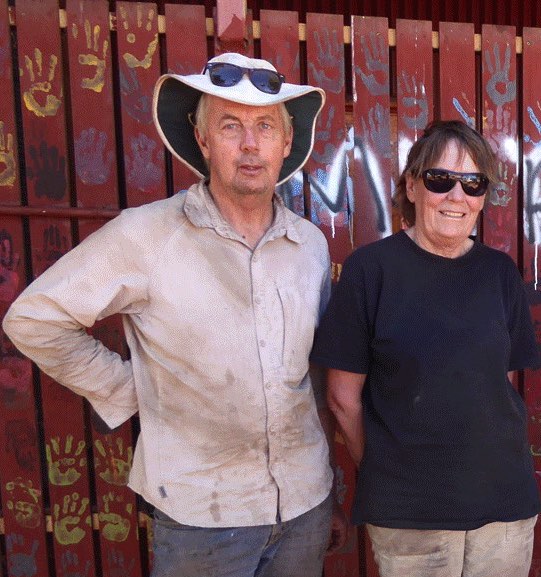
John Moore and Lesley Garton on the Putuparri and the Rainmakers shoot.
The image comes from John’s website and is cropped.
